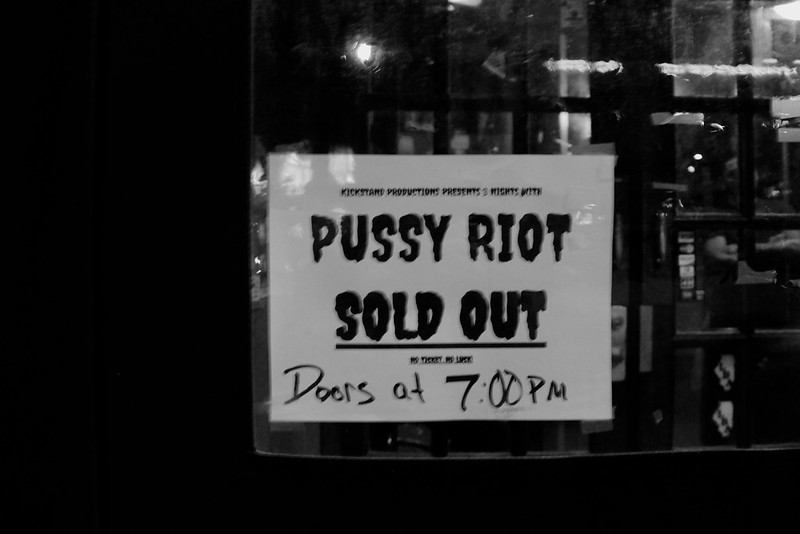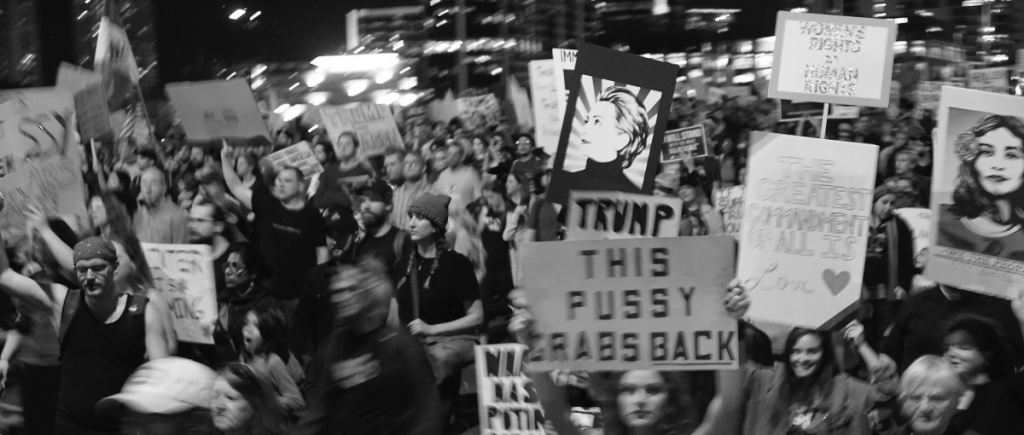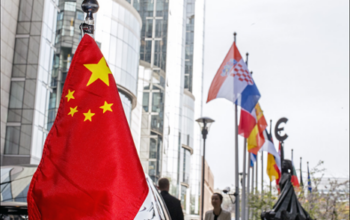Music and protesting have always gone hand in hand. Even Mozart once composed a six voice canon and titled it “Difficile lectu mihi mars et jonicu difficile”, which does not make much sense in Latin, but it sounds like “Kiss my arse!” in German. Why did he do it? Rumor has it that it was solely out of fun. Whilst this form of provocation is not the norm in classical music, there are certain genres that have always been a form of more serious protest. When Punk, a genre fueled by anger and disappointment in society, gained popularity, a new form of protest was born. In the 70s no one in the Rock or Punk scene questioned the necessity of the rebellion, whose soundtrack was provided by The Sex Pistols, Mötley Crue or The Clash. But nowadays, in the time of millennials and avocados, many claim that Punk is dead – for real this time.
Before making any assumptions regarding Punk’s extinction, it’s time to take a step back and remember its glorious early days. Until this day there are many different answers, when one asks for the origin of Punk. Some claim it came all the way from land of Down Under, others would bet their first born that Punk arose from an underground scene in the United States. And people like myself consider the United Kingdom as its origin. Regardless of where it came from, one thing is clear: Punk was the voice for and of the misunderstood and silenced members of society.
Contemporary Punk
Punk is is not a synonym for destructive behaviour or certain aesthetics and it never was supposed to be a specific style or even a particular sound. Punk was and is a rebellious act. When Refused, a Swedish hardcore-punk band, released their new album “War Music” this October the Punk scene welcomed the LP with open arms, because it satisfies its listeners’ nostalgia by taking them back to the early days of punk. The band also made a public statement regarding their latest release, which was full of empowering messages as: “[…] But we still believe that capitalism is cancer. And we still believe it can be cured. We still believe that the patriarchy is cancer. And we still believe it too can be cured. […]”. Even though, their most recent work is without a doubt an anarchistic and powerful piece of art, there are multiple other artists, who have kept Punk alive over the years.

In 2011, for example, a group of young Russian women formed a band called Pussy Riot and wrote protest songs against their politicians. In March 2012, three of those women got arrested for playing their music in front of a cathedral. If you think that their imprisonment for this so-called act of ‘hooliganism’ stopped the band from being vocal about politics, then you are absolutely wrong. Right after her release one of the band members, Nadezhda Tolokonnikova, showed that not even a Russian prison can hold her back from being vocal about the political situation in her home country by shouting “Russia without Putin!” in front of journalists. Also the band’s musical protest has continuously been going strong, for example, in 2018 they published a song in protest against the upcoming Putin election that year.
The actions of Pussy Riot are an example of Punk in its purest form. But there are more Russian groups, who use their art to express their thoughts on, not only the Russian, but the worldwide political and social climate. One of them is Shortparis – a group that combines visuals, choreographies, experimental punk and electronic music. Contrary to Pussy Riot, they do not explicitly refer to Russian topics. The group is rather discrete in their lyrical message, but their music videos and live performances are full of powerful images. One could interpret some of the visuals as signs against neo-Nazism, toxic masculinity or social inequality. The band does not comment on those speculations and give their audience room for their own interpretation, because they would rather let their art speak for itself. In my opinion, their work is a balancing act between political and social matters, whilst their sound is flowing somewhere between hope and frustration.
Not only the Russian government inspires artists to articulate their anger. The American government, for example, has inspired the punk scene for years and especially one song became the sound for the protest against the country’s political situation. I am speaking of “American Idiot” by Green Day, which was not dedicated to the current president, but to one of his predecessors – George W. Bush – and yet, it still is as relevant in 2019 as it was at its release 15 years ago.

In the summer of 2018, when Donald Trump visited the United Kingdom, British Trump critics launched a campaign that hyped the song so much that it ended up in the charts during Trump’s stay in the UK. But also the members of Green Day themselves are very open about their opinion on the man in the oval office. At the 2016 American Music Awards the band’s front man Billie Joe Armstrong took the opportunity of having a large audience to express his disapproval by chanting “No Trump, no K.K.K., no fascist U.S.A.!” into the mic during their performance. Those were just some of the many examples of how Punk is being used as a form of protest in different variations.
A small pinch of Anarchism
Since Anarchism means questioning hierarchical systems of power, the overlap between left-wing supporters, anarchistic beliefs and the punk scene are undeniable. Hence, it is not surprising that the most popular Punk artists are rebelling against fascism, capitalism and right-wing politics. From the very beginning Punk has been an anthem for the ones who are fighting against injustice performed by the ones in power.

It should be clear by now, that being Punk does not have anything to do with throwing bricks at police officers or any other kind of vandalism. It is about questioning social constructs. Deciding to stand up against discrimination is just as Punk as rocking a Mohawk. And in a world that constantly tells you who to love and how to look like, simply embracing and loving yourself is Punk.
To come back to my main question: If one defines Punk as a movement run by people, who spend their days occupying abandoned houses, whilst listening to The Ramones, then yes, Punk has probably died a little and no, we might not be able to relive those days to their full extent. But if one defines Punk as a movement run by people who question the constructs of power and articulate their disappointment in society by creating art such as music then it is still very much alive.
by Kristina Bartl
Photo Credits
Boots, Galdramenn
Pussy Riot, Subterranean Chicago, March 7, 2018, Daniel X. O’Neil, CC BY 2.0
Fight Racism Fight Imperialism – Anti-Trump protesters start to gather in London’s Trafalgar Square, Alisdare Hickson, CC BY-SA 2.0
Protest 2, Pxhere









